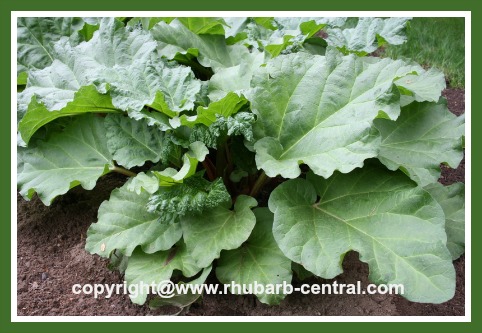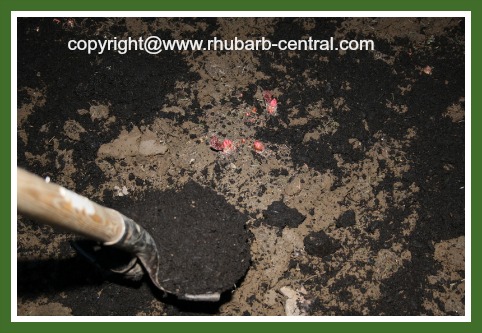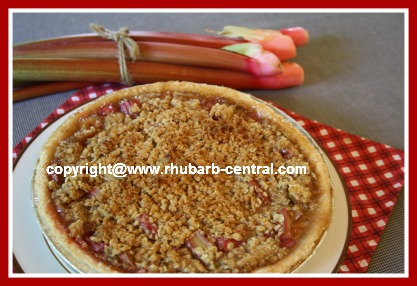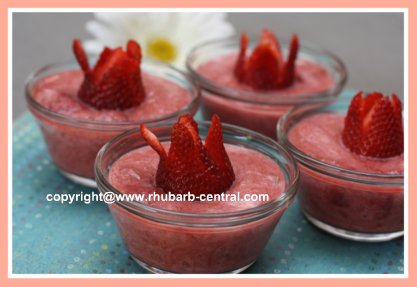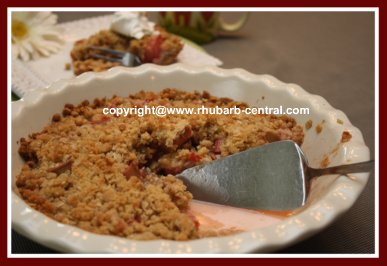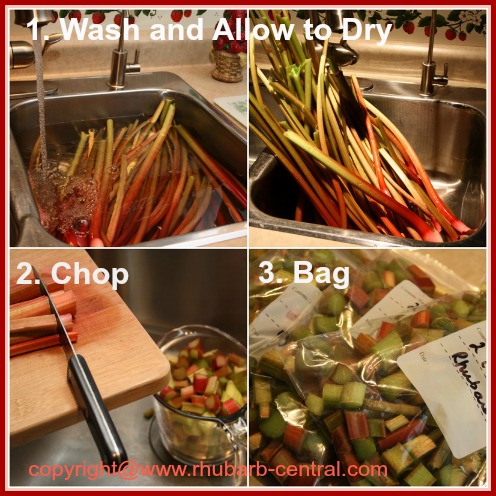Rhubarb Plant Care
How to Care for Rhubarb
Composting, Fertilizing, Watering, Weeding, Winter Protection, and Division of Rhubarb
Is rhubarb easy to grow?
Caring for rhubarb plants is very simple and not labour intensive at all!
In fact, I cannot think of any garden vegetable that is easier to grow than rhubarb ... and it comes up year after year ... vegetable gardening doesn't get much easier than this!
*FTC Disclosure: As an Amazon Associate I may earn from qualifying purchases with no extra cost to you
*FTC Disclosure: As an Amazon Associate I may earn from qualifying
purchases with no extra cost to you
All rhubarb varieties develop a deep root system and thrive in fertile, partially shaded, well drained soil.
Here are some tips for rhubarb plant care which will help you to secure the best rhubarb harvest.
Compost and Fertilizer Requirements
Although rhubarb will grow well in almost any soil, working organic matter or compost through the soil will benefit the rhubarb plants.
The ideal pH level for growing rhubarb is about 5.5 to 6.5.
Rhubarb also responds well to fertilizers. The harvested quality and yield is dependent to some extent on the plant care and fertilization the rhubarb received.
We fertilize each plant with about 1/2 cup of 10-10-10 fertilizer in early spring and again in the fall. Apply the fertilizer in a circle around the plant. It is best not to fertilize new plants until the second year.
If you are able, use well rotted (not fresh) manure worked in the soil around the plants.
Manure helps to conserve moisture, aids the soil structure, and allows for easy absorption of nutrients to the plants. It is not recommended to manure plants the first year of planting.
Composted leaves can be applied in the late fall and early winter, but do not cover the crowns. Covering the crowns may promote rotting.
Here below are general purpose fertilizers that are available for online purchase at *Amazon.com.
If you are interested in all purpose organic granular fertilizer, see the options below.
Click on the images below for more detailed product information and customer reviews.
Water and Moisture Requirements
Rhubarb plants respond well to moisture and adequate watering, however, most rhubarb plants thrive with minimal or no extra watering.
We rarely water our rhubarb, and have actually only done so on a few occasions, only during a severe dry spell. If your rhubarb is getting too dry, water is well, about an inch every week. Watering needs to be "deep watering" to allow the roots to benefit.
Rhubarb should not be overwatered because it is susceptible to crown rot. If you water your rhubarb, do so early in the day to allow the surface of the soil around the plants to dry out during the rest of the day.
Weed Control and Mulching
Just as in the case of any other gardens, rhubarb gardens may need to be weeded from time to time. This is more necessary when the rhubarb plants are still small. As they grow larger, (past the first year), rhubarb gets very little competition from weeds, especially if you mulch around the plants.
If you have Dock Weed plants in the area of your rhubarb, be sure to eradicate it because these weeds attract the "Rhubarb Curculio" bug, a yellowish bug that bores into rhubarb.
If you wish to you can mulch rhubarb with straw or grass clippings to keep the weeds down, and the soil moist. I prefer not to do so because I believe it will contribute to the possibility of crown rot and fungus on the leaves and stalks.
GO to Natural Weed Control Tips
Winter Protection
In the fall, if you live in an area that gets prolonged excessive cold spells, you may want to protect the rhubarb plants after they have been killed by frost. The crowns can be covered with about 8 - 12 inches of straw.
I prefer not to cover my rhubarb with any winter protection. I have never lost any of my rhubarb plants from cold spells, and in Ontario we receive a lot of them!
Do you need to remove the leaves and stalks of the rhubarb plants before winter?
Rhubarb can be harvested all season, right up until the first frost.
Any growth of leaves and stalks that are present after the first frost can no longer be harvested. These left-over stalks and leaves will naturally die off and separate themselves from the crown. I like to remove them to keep the rhubarb patch "neat" and keep away any rotting material. At the same time I also remove the weeds from the patch, and turn over the soil -- to help ensure a great start for the rhubarb in the Spring!
The following Spring only new growth will be sprouting from the rhubarb crowns/roots.
Division of Plants
In order to maintain quality rhubarb and a good yield, it is advisable, to divide your rhubarb plants from time to time.
GO to Transplanting/Dividing Rhubarb
Rhubarb plant care takes very little effort - these hearty plants thrive very well with little care!
Use the links below (or the navigation bars in the left hand column) for links to helpful information about growing rhubarb in the home garden:
LINKS RELATED TO RHUBARB GARDENING
NATURAL PESTICIDE RECIPES and Information
CONTAINER GARDENING - Can Rhubarb be Grown in Containers/Pots?
TOP of Rhubarb Plant Care
HOME to Rhubarb-Central.com's Homepage
Enjoy this Page? Please Share!
©2010-2025 Rhubarb-Central.com
All Rights Reserved Worldwide
No Reproduction Permitted Without the Expressed
Written Consent of the Site Owner
No More
Burned Pie Crust!
Get the
PIE CRUST SHEILD
↡↡↡
My Gardening
FAVORITES
and GIFT IDEAS
↡


